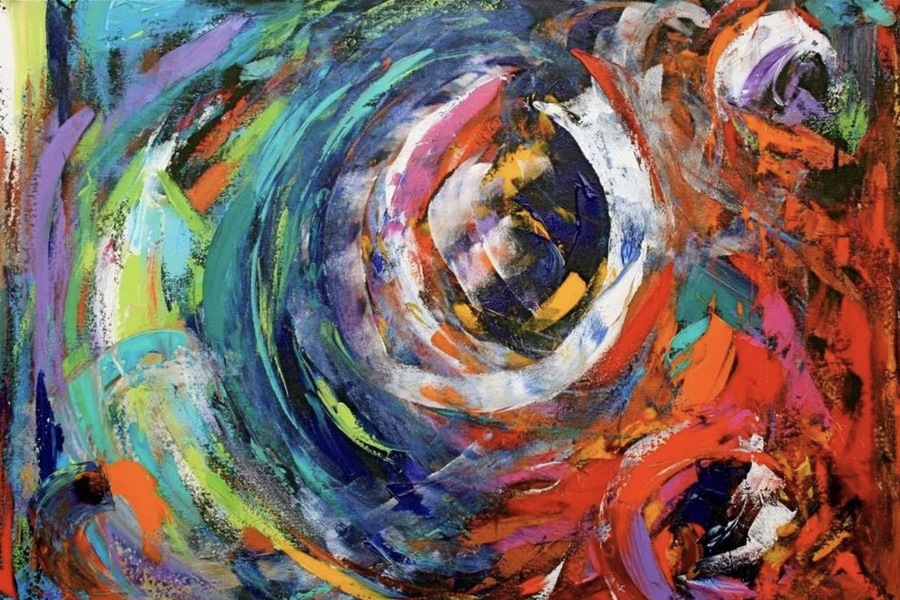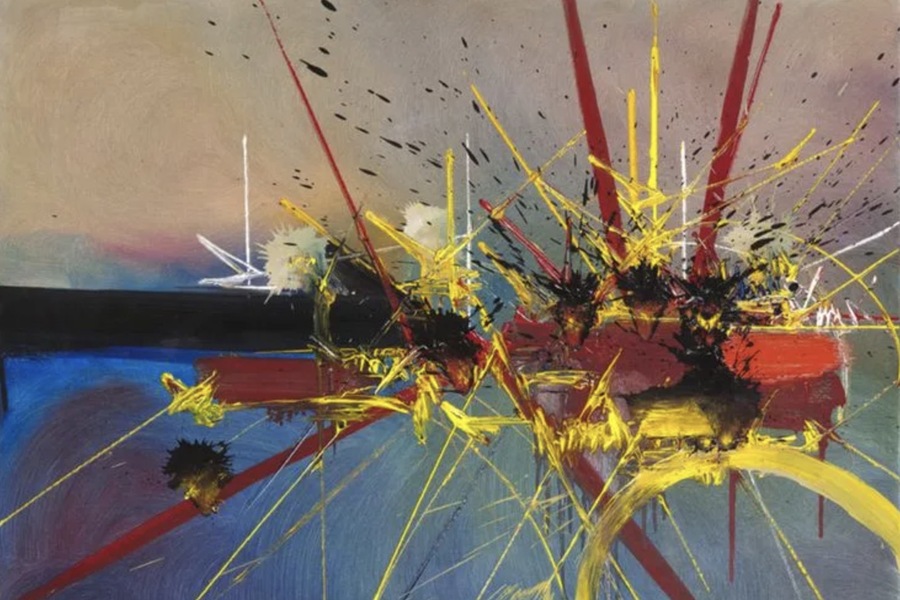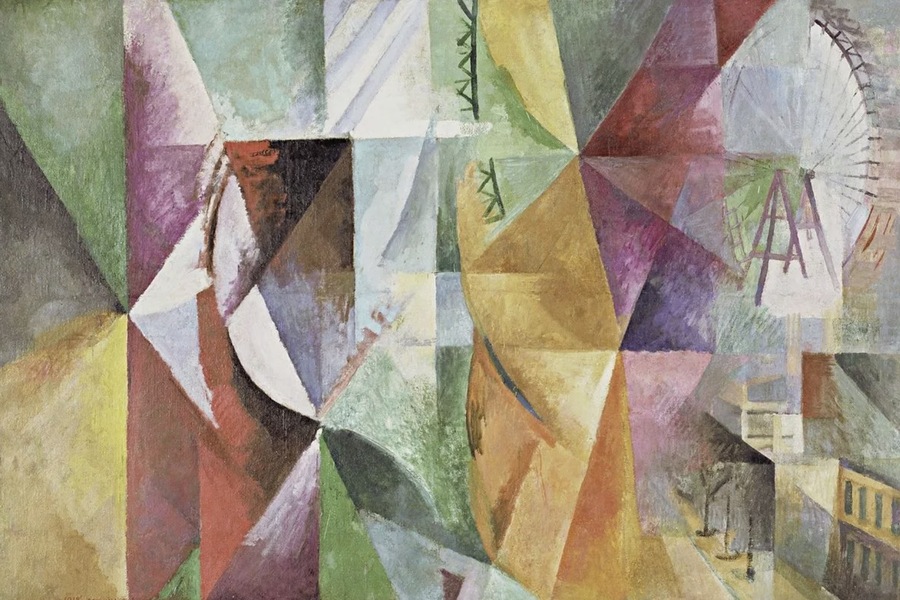Abstractionism is a groundbreaking and transformative movement in the history of art that diverges from the realistic depiction of the surrounding world. Unlike traditional styles such as classicism, which emphasize lifelike portrayals of nature, people, and objects, abstractionism seeks to communicate ideas, emotions, and sensations through non-representational forms. The focus shifts away from literal visual representation to explore the possibilities of shapes, lines, colors, and textures. This approach allows abstract art to resonate deeply with viewers, sparking emotional responses and personal interpretations that vary from one individual to another. The popularity of abstract paintings online has made this art form even more accessible, allowing enthusiasts to discover and connect with these evocative works worldwide.
At first glance, abstract paintings can appear chaotic or random—seemingly a haphazard collection of lines, figures, and spots. Yet, a closer look often reveals a carefully constructed composition imbued with intention and meaning. Abstract artists use these visual elements to provoke thought, stir emotions, and create a visceral connection with the audience. This innovative art form has not only redefined the purpose and scope of painting but also continues to attract a growing number of admirers, with abstract works being highly sought after in galleries, online platforms, and auctions worldwide.
Origins and Philosophical Foundations of Abstractionism
The emergence of abstractionism in the late 19th and early 20th centuries coincided with a broader cultural shift in how art was conceived and created. Rapid industrialization, scientific advancements, and philosophical changes influenced artists to seek new ways of expressing the complexities of the modern world. Traditional art forms, bound by the constraints of realism and academic norms, began to feel inadequate for capturing the emotional and intellectual experiences of contemporary life.
One of the key philosophical underpinnings of abstractionism was the desire to liberate art from its dependence on mimetic representation. This idea was heavily influenced by the works of thinkers such as Arthur Schopenhauer and Friedrich Nietzsche, who emphasized the primacy of human emotion and subjective experience. Artists like Wassily Kandinsky, often considered the father of abstract art, were also inspired by spirituality and sought to convey inner truths and universal human experiences through their work. Kandinsky’s theoretical writings, such as Concerning the Spiritual in Art (1911), articulated the belief that colors, shapes, and lines possess an inherent emotional and symbolic power, independent of representational content.
The Pioneers of Abstractionism
The earliest abstract artists were innovators who sought to push the boundaries of artistic expression. They rejected the constraints of traditional painting and embraced new visual languages.
Kandinsky’s journey into abstraction was driven by his desire to create a “pure” art form that could evoke emotions in the same way music does. His works, such as Composition VII (1913), are characterized by dynamic arrangements of lines, shapes, and colors that seem to vibrate with energy and emotion.
- Kazimir Malevich
Malevich’s Suprematism marked a radical departure from representational art. His iconic work Black Square (1915) is often seen as a manifesto for abstractionism, symbolizing a break with the past and the pursuit of artistic purity.
Mondrian’s contribution to abstractionism lay in his development of geometric abstraction. His De Stijl compositions, such as Composition with Red, Blue, and Yellow (1930), use grids and primary colors to create a sense of balance and harmony.
- Pablo Picasso
While Picasso is primarily associated with Cubism, his later works incorporated abstract elements, contributing to the broader abstractionist movement. His fragmented forms and distorted perspectives paved the way for more experimental approaches to art.

Evolution of Abstractionism Through the 20th Century
Abstractionism evolved significantly throughout the 20th century, branching into various directions and gaining widespread recognition. Each decade brought new innovations and interpretations, reflecting the changing cultural and social landscape.
The Early 20th Century: The Birth of Abstraction
The first wave of abstractionism was marked by experimentation and theoretical exploration. Artists like Kandinsky, Malevich, and Mondrian were central figures, using abstraction to challenge traditional notions of beauty and representation.
The Mid-20th Century: Expansion and Diversification
The post-war period saw abstractionism flourish as artists around the world adopted and adapted its principles. In the United States, the Abstract Expressionist movement emerged, led by figures such as Jackson Pollock, Mark Rothko, and Willem de Kooning. Pollock’s drip paintings and Rothko’s color fields demonstrated the versatility of abstraction as a means of emotional and intellectual exploration.
In Europe, movements like Tachisme and Art Informel offered alternative approaches to abstraction, emphasizing spontaneity and the physical act of painting.
The Late 20th Century: Minimalism and Beyond
The latter half of the century saw the rise of minimalist abstraction, characterized by simplicity and restraint. Artists like Barnett Newman and Donald Judd stripped art down to its essential elements, focusing on form, color, and spatial relationships. At the same time, contemporary artists like Jean-Michel Basquiat brought a raw, expressive energy to abstraction, blending it with social commentary and cultural references.
The Main Directions Within Abstractionism
Over time, abstractionism split into several distinct directions, each with its own techniques, philosophies, and aesthetic goals:
- Geometric Abstraction
Geometric abstraction is characterized by precise shapes and structured compositions. Artists like Mondrian and Theo van Doesburg used grids, rectangles, and limited color palettes to create works that emphasize order and harmony.
- Color Abstraction
This direction focuses on the emotional impact of color. Mark Rothko’s large-scale works, featuring soft-edged rectangles of color, evoke feelings of transcendence and introspection.
- Minimalist Abstraction
Minimalist abstraction reduces art to its most fundamental elements, often eliminating references to the physical world altogether. Barnett Newman’s works, with their simple vertical “zips,” are iconic examples of this approach.
- Expressive Abstraction
Artists in this direction emphasize dynamism, emotion, and spontaneity. Jackson Pollock’s action paintings and Jean-Michel Basquiat’s layered, graffiti-like compositions exemplify this energetic and visceral style.

The Enduring Appeal of Abstract Art
Abstract art remains one of the most dynamic and influential forms of artistic expression. Its capacity to convey complex emotions and ideas without relying on literal representation makes it endlessly versatile and relevant. Today, abstract works are celebrated in museums, galleries, and private collections around the world. The digital age has further expanded its reach, with online platforms making abstract art accessible to a global audience.
Collectors and enthusiasts are increasingly drawn to abstract paintings, appreciating their ability to evoke personal interpretations and emotional connections. Online marketplaces and auctions have made it easier than ever to discover and acquire abstract works, ensuring that this revolutionary art form continues to thrive.
Conclusion
Abstractionism is more than a style—it is a philosophy and a testament to the limitless potential of human creativity. By rejecting the constraints of realism, abstract artists have opened new avenues for artistic expression, challenging us to see and feel in new ways. Whether through the geometric precision of Mondrian, the emotional depth of Rothko, or the raw energy of Pollock, abstractionism continues to inspire, provoke, and captivate. As it evolves and adapts to the modern world, abstractionism remains a powerful and expressive art form that invites us to explore the depths of our own emotions and imagination.

Hiking addict, mother of 3, record lover, Eames fan and brand builder. Performing at the crossroads of art and function to give life to your brand. Let’s make every day A RAZZLE-DAZZLE MUSICAL.
